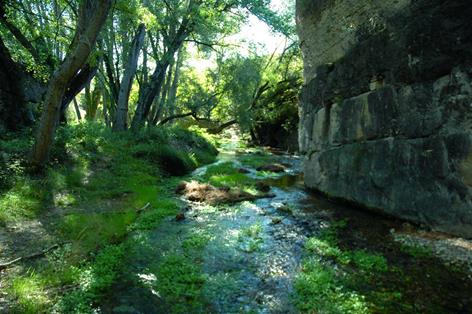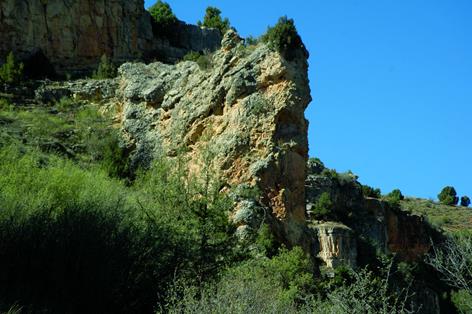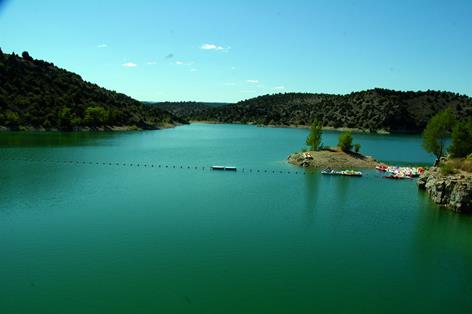- Home
- Rural Development
- Nature Trails
- Nature Trails
- Northeast Sector
- Río Guadalaviar
River Guadalaviar Nature Trail
Description

Walking under vulture colonies
This route, between San Blas borough (Teruel) and el Arquillo reservoir, covers the canyon of the River Guadalaviar, an area where it is not unusual to see brids of prey, as the golden eagle, Egyptian vulture or bearded vulture. The route can be complemented leaving the riverbed in order to walk over the upper part of this spectacular gorge.
The Nature Trail begins at the outskirts of San Blas borough, in an esplanade where there is an information panel and the first walkways next to the remains of an old mill. A ford of stones over the river enables you to cross to the other side and approach a spring.
The route continues upstream on the left bank, parallel to the waste pipe of a fish farm until it crosses over to the other bank via a metal walkway. This boxed-in riverbank, which has griffon vultures (Gyps fulvus) flying over it, contains a coppice formed of large willows (Salix sp.), ashes (Fraxinus sp.), hawthorns (Crataegus monogyna) and black poplar trees (Populus sp.), and a dense undergrowth of thornless blackberry bushes (Rubus ulmifolius), snowy mespilus (Amelanchier ovalis) and rose bushes (Rosa sp.), while in some areas, thick reedbeds (Phragmites australis) cover the water.
After crossing a small esplanade, you will come to the first rustic staircase that serves to access a block of stone that has collapsed over the river and which acts as a viewpoint from where you can spot the remains of an old dam. Once you have crossed this gigantic obstacle, the Trail descends down to the river where, a little further on, you will have to repeat the operation and get round another block via walkways and climb up to the top of the other bank.
The path then features more ascending steps, which cross a narrow canyon whose bed is completely covered by the river. On a platform situated halfway up the hillside, there is a fork where you can choose between two very different alternatives. We recommend following the two routes as you will be pleasantly surprised by both.
Going down to the river plain n in order to reach a platform over the spectacular narrows of the river, which allow you to enter this rocky gorge where the remains of a dressed stone wall of a small deserted mediaeval dam are still preserved. This stretch ends in another more open meadow where there is a space that is not covered by water.
The other alternative that leads to the same place, but by climbing to the high moorland in a zigzagging path that gains a height of some 100 m. This route is worthwhile on account of the views of Teruel that can be seen from the edge of the canyon, with its juniper-covered (Juniperus sp.) sides and cereal crop-covered summit plains. To the left of the incline, there is a viewpoint and, to the right, a path that goes round the canyon. This stretch offers an educational visual contrast between the human action represented by the route of the road, and the force of nature which, over centuries, has been carving the deep gap the river flows through today.
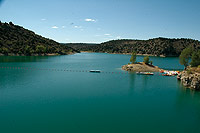
This alternative joins the first after going down to the river via a long staircase. The route continues within the River Guadalimar canyon, with a succession of eight wooden bridges. Along this narrow stretch there are a couple of shepherd’s shelters, the first carved into the rock and the second in a crevice on the other bank.
The route finally reaches the gigantic dam of the Arquillo de San Blas reservoir, which provides the flow needed to maintain the biodiversity of the river, continually releasing water through its locks. A staircase on the left-hand side goes up to the dam proximities, offering stunning views of its structure. In this way, the Nature Trail ends opposite an excellent view of the reservoir and the juniper thickets located on the other bank, listed as a Site of Community Importance (SCI) as the "Sabinar de San Blas".
Sites of interest
Profile
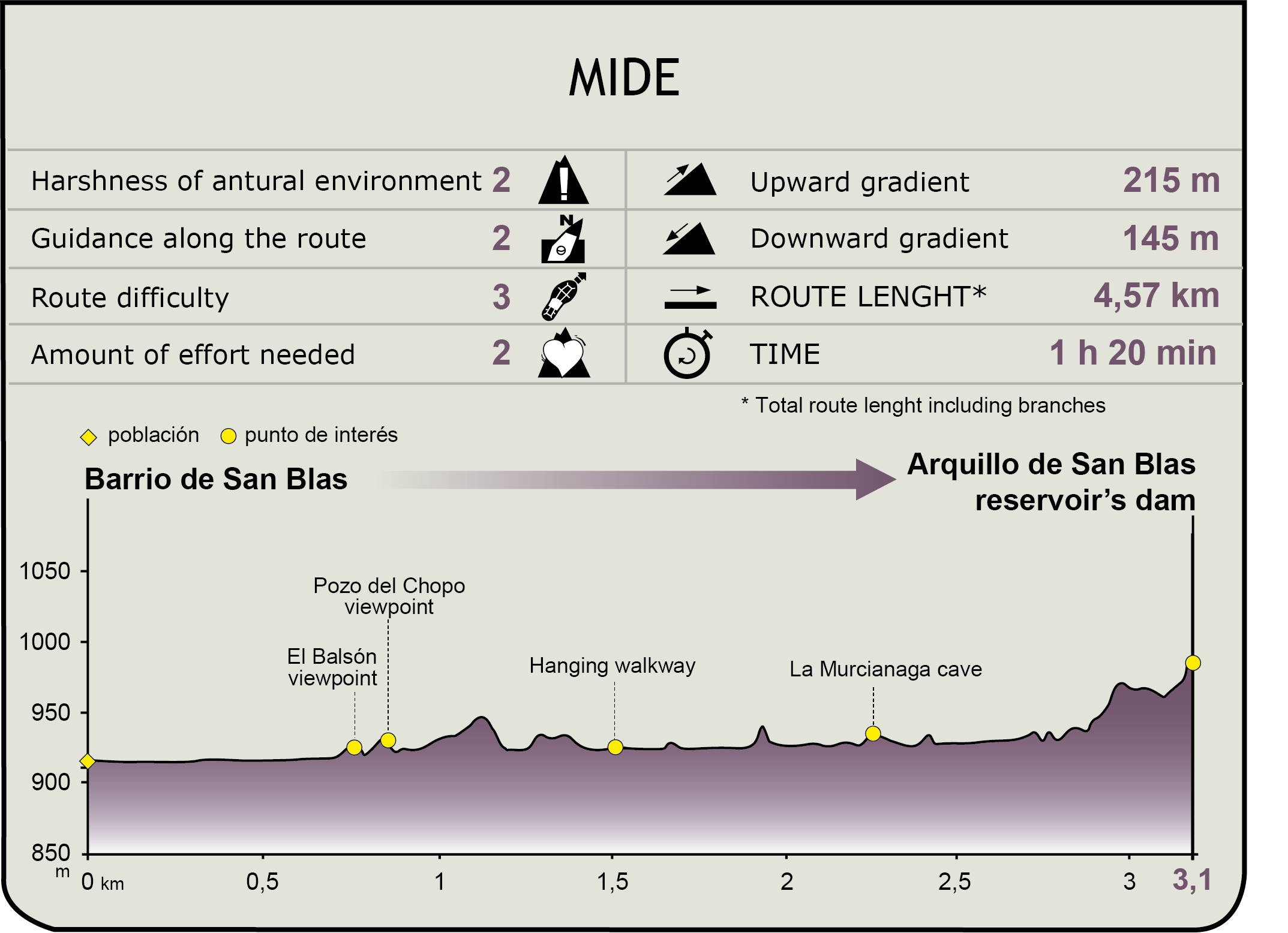
MIDE (Method for the Information of Excursions)
Featured
Further information
Teruel
The capital city of Teruel has been listed as a World Heritage Site on account of its Mudejar-style monuments. The most outstanding are the Cathedral of Santa María de Mediavilla, the Towers of El Salvador and San Martín and the Tower and Church of San Pedro.
A mediaeval Teruel exists, as is evidenced by the underground cisterns of the Plaza del Torico and the Turrets of la Bombardera, of El Rincón, of Ambeles and of San Esteban, as well as the Gates of la Andaquilla, of Daroca, of La Traición and of San Miguel, which all form part of the wall surrounding the city.
Nevertheless, in its city centre, you can also find elegant examples of Neo-Mudejar art, such as the southern façade of the Cathedral, the Bull Ring, and the staircase that accesses the Paseo del Óvalo. Teruel also conceals modernist treasures such as El Torico, La Madrileña, Casa Ferrán and Casa Bayo, with their wrought iron bay windows, as well as the Church of San Salvador, located on the outskirts.
From the pathway of the Chapel of Santa Bárbara, you can admire the best views of the city and its surrounding area.
